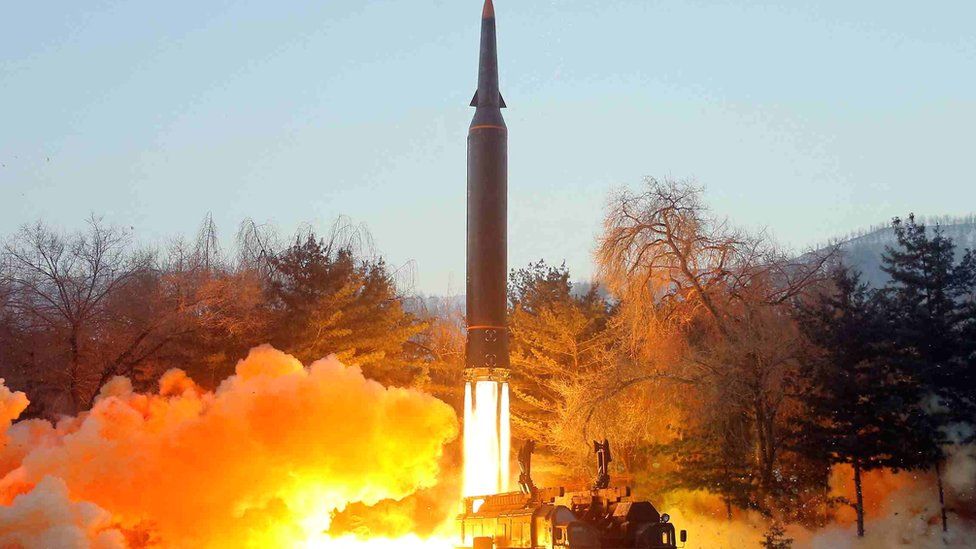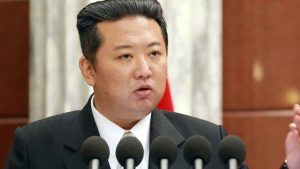It’s all very different from August 2017 when Japan awoke to the sound of air raid sirens. Without warning North Korea had fired an intercontinental ballistic missile (ICBM) over the top of Japan into the Pacific Ocean. It was an audacious act.
This time North Korea’s missiles have all been short range, and have landed in the sea, well away from the Japanese coast. Kim Jong-un appears to be holding back, for now. But that could change if he doesn’t get the result he wants.
So, what does Kim Jong-un want?
“From my perspective it was predictable,” says Professor Kim Dong Yup, a former South Korean naval commander.
“We get surprised because we underestimate North Korean technology and assume it is suffering at the moment. In fact, North Korea is definitely advancing its military capability faster than we assumed.”
After the tests on 5 and 10 January, Pyongyang claimed it has successfully tested something called a “hypersonic glide vehicle” (HGV) and a “manoeuvrable re-entry vehicle” (MARV).
Why does that matter?
Because it means North Korea is developing technology that can defeat the costly and complex missile defence systems that America and Japan have been deploying across this region.
“It seems pretty clear that their aim is to develop weapons that can evade and complicate missile defences that are highly manoeuvrable and harder for the United States to pre-empt, let alone to detect,” says Duyeon Kim at the Centre for a New American Century.
Professor Kim Dong Yup agrees: “Ultimately what the North is aiming to achieve is to debilitate the enemy’s missile defence system. “They want to have a deterrence system that is like a scorpion’s tail.”
A scorpion does use the sting in its tail to defend itself, but also to attack and kill its prey. So, which is it for North Korea?
This is a widely held view among the North Korea watching community.
And yet Pyongyang is very far beyond the point at which its conventional and nuclear capability has become an effective deterrent against attack from the South or from the US – both of which have repeatedly said that they harbour no ambitions to attack or destroy the North Korean regime.
So why does the ruler of this small, impoverished state continue to spend between a fifth and a quarter of its GDP on the military?
“So Kim Jong-un feels chronically insecure. I think he doesn’t trust anybody, including China and Russia, and so might feel the need to build up his capability beyond what we might consider sufficient.”
Others fiercely disagree.
Professor Brian R Myers at Dongseo University in the South Korean city of Busan says Pyongyang has a much more ambitious goal for its nuclear and missile programmes.
He believes North Korea’s hope is to use its arsenal as leverage to negotiate a peace treaty with South Korea and a US withdrawal from the Korean peninsula. After that, he says, the North believes it will be free to subjugate the South.






